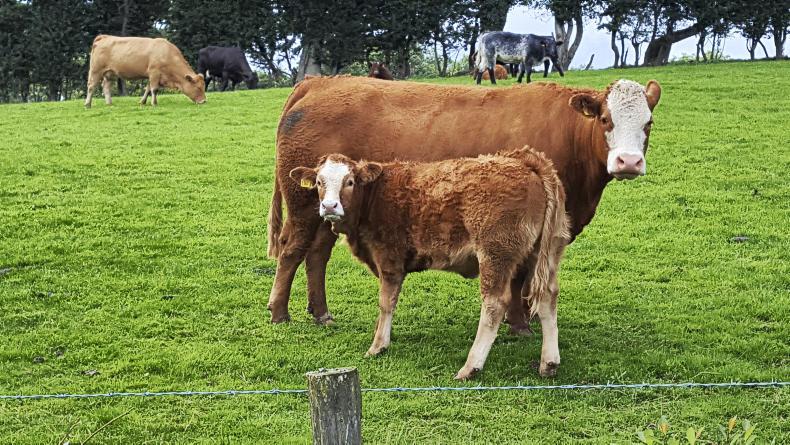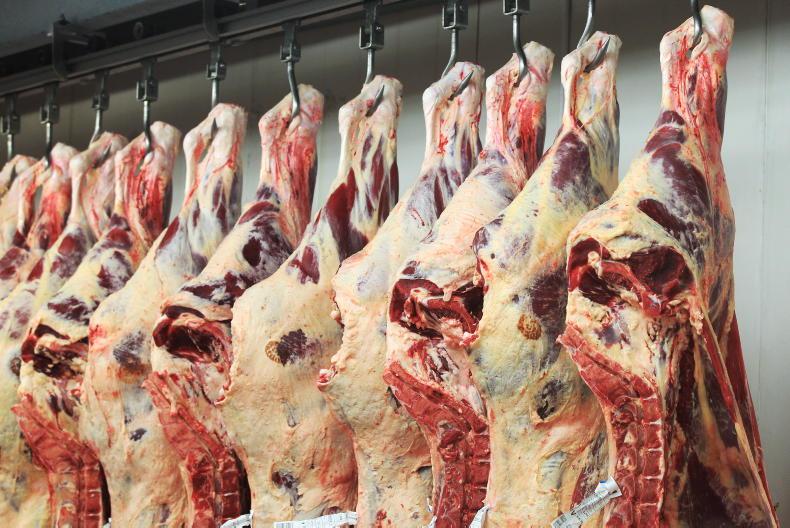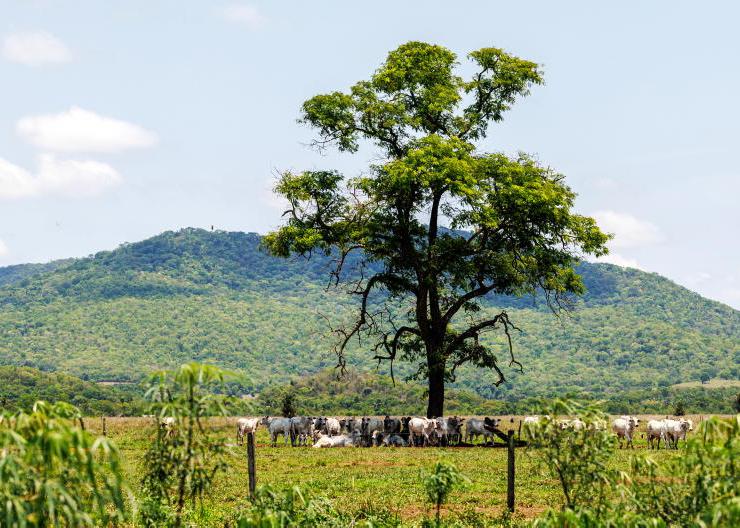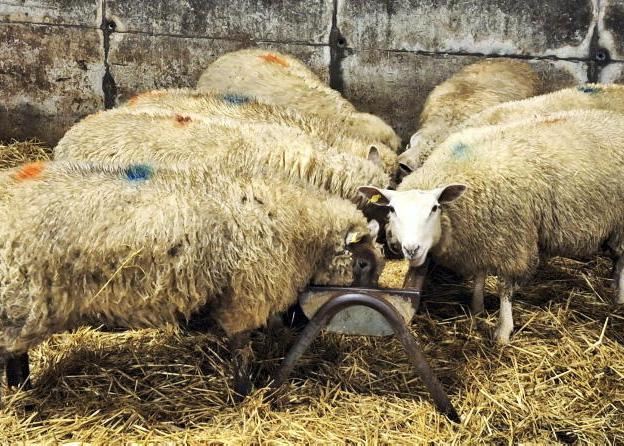When mechanical (VIA) grading was introduced into the major NI meat plants in 2011, a new beef price grid was also put in place, and agreed between the Ulster Farmers’ Union (UFU) and the NI Meat Exporters’ Association (NIMEA).
The main difference from the previous system was that it was based on a 15-point, rather than a five-point scale, with the various fat and conformation grades split into three (for example, an R-grade is now classed as either R-, R= or R+, and fat class 3 is now split into 3-, 3= and 3+).
The old grid relied on 6p/kg gaps down the grades. That was largely replicated in the new grid, except for some minor tweaks, which put slightly more value on to top grading cattle. In the end, any changes made were largely price neutral for a meat factory, so the cost of a weekly kill was effectively still the same, irrespective of the system used.
However, the main benefit of the new grid for farmers was that the penalties for suppliers on some marginal grades were less severe. Under the old system, if an animal was borderline between a U and an R, but was graded R, the penalty was 6p/kg. On the new grid, the difference between a U- and an R+ is 2p/kg. But the key point is that the 6p/kg gap down a full grade was still the fundamental basis for a new grid. Yet this 6p/kg gap goes right back to the time when beef prices were 150p/kg, so on that basis alone, it is time that these price gaps are revised.
UK market
If we take a look at what happens across the UK, each week the Livestock and Meat Commission (LMC) reports the actual prices paid for prime cattle across a range of grades. The price paid for U3, R3 and R4 grading cattle in NI is consistently behind what is paid in England, Wales and Scotland.
Yet if you look at the price paid for O3 grading cattle in NI, it is often ahead of what is on offer in Britain. At the end of June, the average price for O3 grading steers in NI was 361.1p/kg, a total of 3.3p more than the average in Britain. For R4s the NI price was over 15p behind, for R3s it was nearly 8p behind and for U3s the NI price was 13p/kg behind the average from Britain.
In terms of differences up and down the grades, in Britain the average price paid for an U3 and R3 steer was 24 and 20.5p/kg, respectively, more than an O3. In NI, less than 10p/kg covered the difference in prices paid between O3, R3 and U3.
It points to NI factories either not paying enough for good conformation quality, or over-paying for O3s at the expense of R and U grades.
Europe
When comparing across the European beef market, our research suggests that the differential across conformation grades in NI is perhaps the lowest anywhere among major beef-producing nations. The French have a price gap of over 30p/kg between an O3, an R3 and a U3. The Spanish have price differences between 20p and 30p. The Germans have a difference between an O3 and R3 heifer of over 50p/kg, while the Italians have the difference at close to 100p/kg.
Ireland
Those price differences are less pronounced in the Republic of Ireland, but it is perhaps here where the most work has been done to produce a price grid that is closely related to the actual meat yield of a carcase.
The basis for the payment grid in Ireland goes back to a large carcase dissection study led by Dr Michael Drennan at Teagasc in the mid-2000s. It involved the dissection of half carcases from 507 steers, 115 young bulls and 40 heifers.
The work showed that the EUROP classification system was a good (but not perfect) predictor of meat yield. A one-unit increase in carcase conformation score (eg O3 to R3) increased meat yield by 3.5 percentage units and decreased fat and bone yield by 1.3 and 2.2 percentage units, respectively.
Putting that into monetary terms, a one-unit increase in the carcase conformation score increased carcase value by 18c/kg (or 5.8 %).
Fat
In terms of carcase fat, a one-unit increase in fat score resulted in an increase of 3.6 percentage units in fat and decreases of 2.9 and 0.7 percentage units in meat and bone, respectively. This unit increase in carcase fat score decreased carcase value by 17 c/kg.
At the time, the base price for an R3 was 312c/kg (compared with 400c/kg now), so it could be argued that the 18c/kg difference between a R= and a U= in the Irish beef grid should actually be over 23c/kg now.
Either way, it is significantly more than the 6p/kg differentials across the grades in NI.
Two new pricing
options explored
Using the carcase dissection study from Teagasc as the basis, the Irish Farmers Journal has looked at the effect of two new pricing scenarios in NI.
Both scenarios work on the basis that the base grade is an R=3.
Scenario one (Table 1) applies a 15p/kg difference up and down the conformation grades, so a U=3 is paid 15p/kg more than a R=3 and a O=3 is paid 15p/kg less.
For fat score, moving from a 3- to a 2-, or from a 3- to a 4+ on fat incurs a 12p/kg deduction (4p deduction on each fat sub-class).
Scenario two (Table 2) works on the same basis, but the differences applied are 18p/kg on conformation and 15p/kg on fat, which is probably closer to what research indicates should be the actual difference in value, based on meat yield.
Using a sample of nearly 500 cattle, believed to be representative of the kill in NI, the cattle were priced according to the current grid, and that proposed in scenarios one and two. Both scenarios come out as virtually price neutral for meat plant owners.
Across all 500 cattle (a mix of steers, heifers and young bulls of various weights and grades), the average price paid on the current payment system (assuming a U-3 price of 360p/kg) was £1,184.30. Under scenario one, the average was £1,185.54, and in scenario two, it came to £1,182.27.
The prices that would be paid for selected animals across the three scenarios are shown in Table 3. Both of the new pricing models put more money towards animals grading R+ and above.
Having a beef price structure which actually reflects the value of the animal, is surely in the long-term interest of the beef industry in NI.
Read more
Live cattle prices down as demand eases
Northern view: price pressure mounts as cattle supplies increase
When mechanical (VIA) grading was introduced into the major NI meat plants in 2011, a new beef price grid was also put in place, and agreed between the Ulster Farmers’ Union (UFU) and the NI Meat Exporters’ Association (NIMEA).
The main difference from the previous system was that it was based on a 15-point, rather than a five-point scale, with the various fat and conformation grades split into three (for example, an R-grade is now classed as either R-, R= or R+, and fat class 3 is now split into 3-, 3= and 3+).
The old grid relied on 6p/kg gaps down the grades. That was largely replicated in the new grid, except for some minor tweaks, which put slightly more value on to top grading cattle. In the end, any changes made were largely price neutral for a meat factory, so the cost of a weekly kill was effectively still the same, irrespective of the system used.
However, the main benefit of the new grid for farmers was that the penalties for suppliers on some marginal grades were less severe. Under the old system, if an animal was borderline between a U and an R, but was graded R, the penalty was 6p/kg. On the new grid, the difference between a U- and an R+ is 2p/kg. But the key point is that the 6p/kg gap down a full grade was still the fundamental basis for a new grid. Yet this 6p/kg gap goes right back to the time when beef prices were 150p/kg, so on that basis alone, it is time that these price gaps are revised.
UK market
If we take a look at what happens across the UK, each week the Livestock and Meat Commission (LMC) reports the actual prices paid for prime cattle across a range of grades. The price paid for U3, R3 and R4 grading cattle in NI is consistently behind what is paid in England, Wales and Scotland.
Yet if you look at the price paid for O3 grading cattle in NI, it is often ahead of what is on offer in Britain. At the end of June, the average price for O3 grading steers in NI was 361.1p/kg, a total of 3.3p more than the average in Britain. For R4s the NI price was over 15p behind, for R3s it was nearly 8p behind and for U3s the NI price was 13p/kg behind the average from Britain.
In terms of differences up and down the grades, in Britain the average price paid for an U3 and R3 steer was 24 and 20.5p/kg, respectively, more than an O3. In NI, less than 10p/kg covered the difference in prices paid between O3, R3 and U3.
It points to NI factories either not paying enough for good conformation quality, or over-paying for O3s at the expense of R and U grades.
Europe
When comparing across the European beef market, our research suggests that the differential across conformation grades in NI is perhaps the lowest anywhere among major beef-producing nations. The French have a price gap of over 30p/kg between an O3, an R3 and a U3. The Spanish have price differences between 20p and 30p. The Germans have a difference between an O3 and R3 heifer of over 50p/kg, while the Italians have the difference at close to 100p/kg.
Ireland
Those price differences are less pronounced in the Republic of Ireland, but it is perhaps here where the most work has been done to produce a price grid that is closely related to the actual meat yield of a carcase.
The basis for the payment grid in Ireland goes back to a large carcase dissection study led by Dr Michael Drennan at Teagasc in the mid-2000s. It involved the dissection of half carcases from 507 steers, 115 young bulls and 40 heifers.
The work showed that the EUROP classification system was a good (but not perfect) predictor of meat yield. A one-unit increase in carcase conformation score (eg O3 to R3) increased meat yield by 3.5 percentage units and decreased fat and bone yield by 1.3 and 2.2 percentage units, respectively.
Putting that into monetary terms, a one-unit increase in the carcase conformation score increased carcase value by 18c/kg (or 5.8 %).
Fat
In terms of carcase fat, a one-unit increase in fat score resulted in an increase of 3.6 percentage units in fat and decreases of 2.9 and 0.7 percentage units in meat and bone, respectively. This unit increase in carcase fat score decreased carcase value by 17 c/kg.
At the time, the base price for an R3 was 312c/kg (compared with 400c/kg now), so it could be argued that the 18c/kg difference between a R= and a U= in the Irish beef grid should actually be over 23c/kg now.
Either way, it is significantly more than the 6p/kg differentials across the grades in NI.
Two new pricing
options explored
Using the carcase dissection study from Teagasc as the basis, the Irish Farmers Journal has looked at the effect of two new pricing scenarios in NI.
Both scenarios work on the basis that the base grade is an R=3.
Scenario one (Table 1) applies a 15p/kg difference up and down the conformation grades, so a U=3 is paid 15p/kg more than a R=3 and a O=3 is paid 15p/kg less.
For fat score, moving from a 3- to a 2-, or from a 3- to a 4+ on fat incurs a 12p/kg deduction (4p deduction on each fat sub-class).
Scenario two (Table 2) works on the same basis, but the differences applied are 18p/kg on conformation and 15p/kg on fat, which is probably closer to what research indicates should be the actual difference in value, based on meat yield.
Using a sample of nearly 500 cattle, believed to be representative of the kill in NI, the cattle were priced according to the current grid, and that proposed in scenarios one and two. Both scenarios come out as virtually price neutral for meat plant owners.
Across all 500 cattle (a mix of steers, heifers and young bulls of various weights and grades), the average price paid on the current payment system (assuming a U-3 price of 360p/kg) was £1,184.30. Under scenario one, the average was £1,185.54, and in scenario two, it came to £1,182.27.
The prices that would be paid for selected animals across the three scenarios are shown in Table 3. Both of the new pricing models put more money towards animals grading R+ and above.
Having a beef price structure which actually reflects the value of the animal, is surely in the long-term interest of the beef industry in NI.
Read more
Live cattle prices down as demand eases
Northern view: price pressure mounts as cattle supplies increase










SHARING OPTIONS